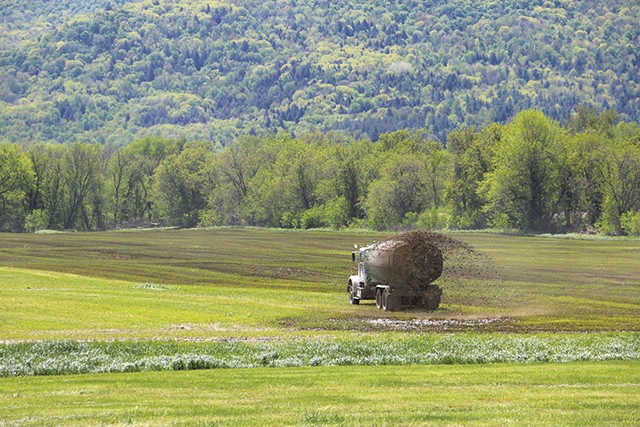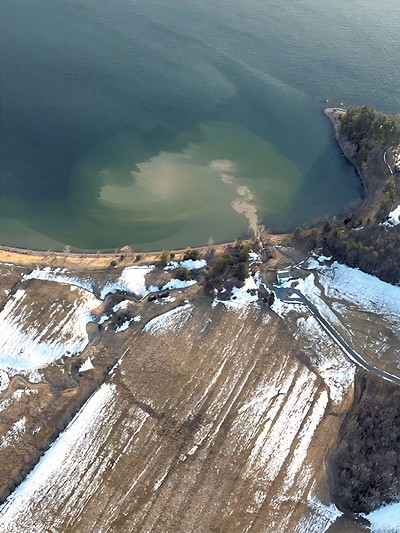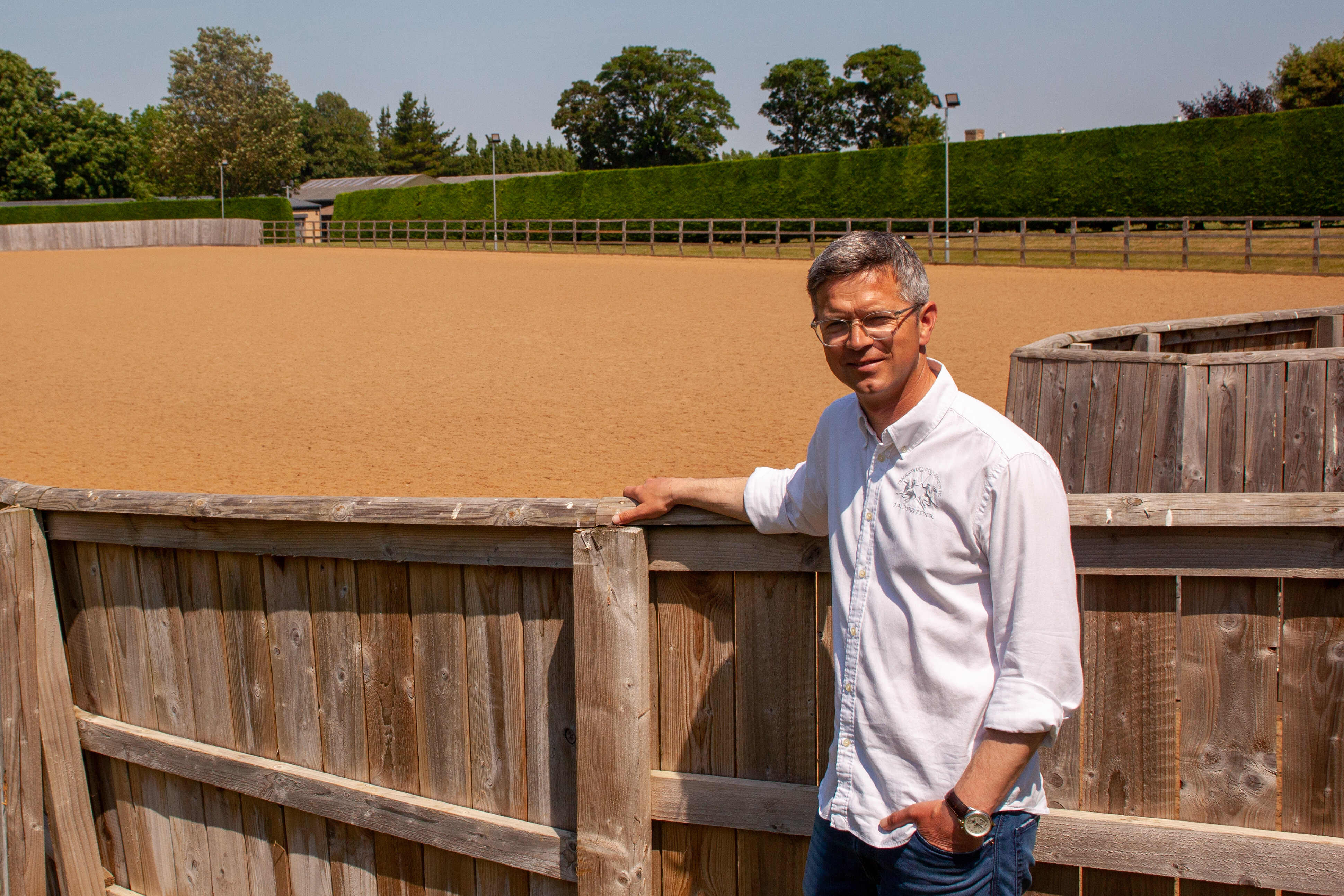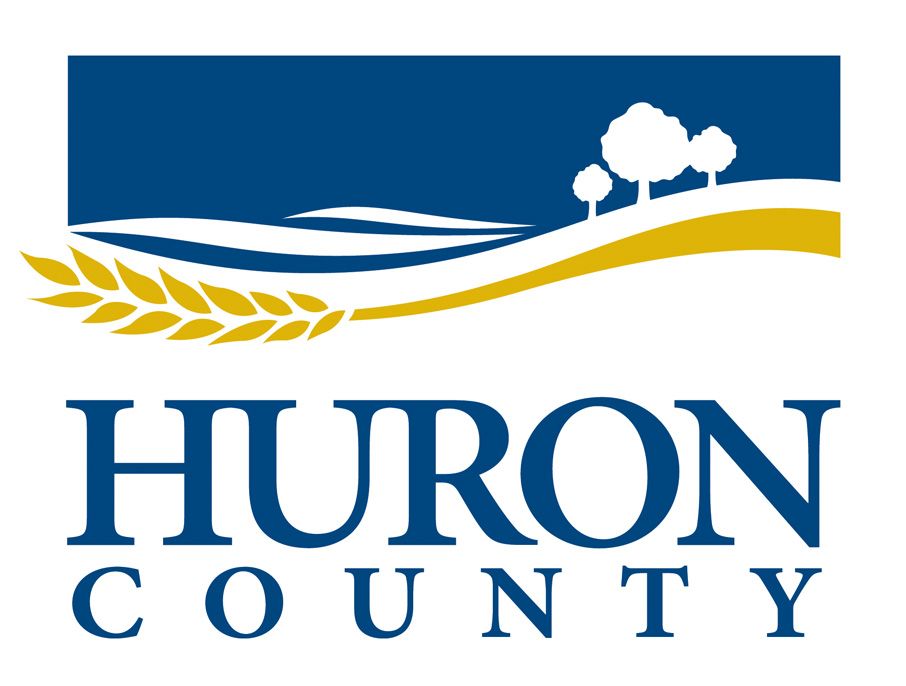Lake Advocates Say Vermont Has Botched Regulating Pollution on Dairy Farms | Environment | Seven Days
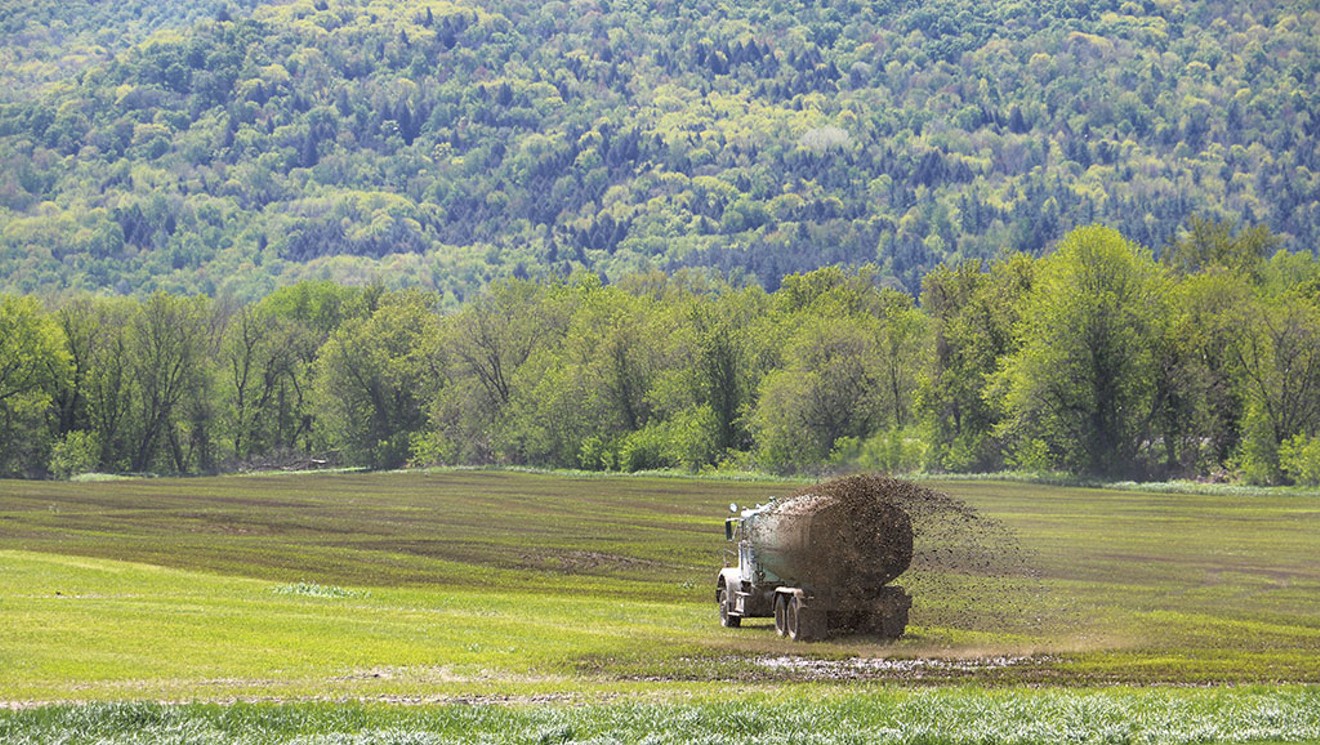
Rob Mann’s spirits soared as he flew over Addison County on March 24 in a Cessna piloted by his son, Caleb, who was taking his parents on a celebratory spin after earning his pilot’s license. Over Panton, however, Mann spotted something below that made his heart sink — a huge plume of brown water flowing into Lake Champlain.
Mann realized that the source of the spreading stain, just south of Aerie Point, was the snow-covered fields of the Vorsteveld dairy farm. After a neighbor’s lawsuit led to a high-profile civil trial in January 2022, a judge had ordered the farm to address its runoff problem.
As they circled back for a closer look, Mann pulled out his iPhone and snapped a few pictures.
“I thought the judgment in the case seemed fair,” said Mann, who lives in Colchester and had read about the trial. “But when I looked down and saw the runoff was still happening, I thought, What’s really changed?”
Vermonters who enjoy the state’s lakes and streams worry about pollution from dairy farms, whose manure and commercial fertilizer can run off into waterways, where it feeds algae blooms and weed growth. Though state regulators have attempted for years to address on-farm pollution, environmental groups have long argued that the state is too lenient when it comes to addressing violations of the federal Clean Water Act.
Last year, three influential environmental advocacy organizations — the Conservation Law Foundation, the Lake Champlain Committee and the Vermont Natural Resources Council — jointly petitioned the U.S. Environmental Protection Agency to intervene, essentially saying Vermont needs to get its cow shit together.
Their critique of the unusual way Vermont oversees dairy pollution is not new. The federal agency granted Vermont the authority to administer the Clean Water Act in 1974. Enforcement fell to both the Agency of Agriculture, Food and Markets and the Agency of Natural Resources. But a “stubborn rivalry” between the agencies has grown, according to the environmental groups’ 46-page petition. Drawing from a trove of documents and emails, it paints a bleak picture of systemic dysfunction.
Regulators acknowledge that tensions have existed between the two agencies but say the relationship has improved in recent years — and that their combined work has significantly reduced runoff from farms.
The petition nevertheless lays out a case that interdepartmental infighting undermines cleanup efforts, confuses farmers, and wastes precious time and taxpayer dollars.
The relationship between regulators is so broken, the groups argue, that if the state can’t fix the problem, the federal government should strip Vermont of its authority to regulate pollution in its waterways.
“In order to achieve the monumental phosphorus reductions we need to clean up the lake, we need a functioning system to regulate those farms,” said Elena Mihaly, director of the Conservation Law Foundation in Vermont. “We have a lot of concern that the structure right now is not set up for success.”
Such criticism has only intensified as state and federal governments have poured hundreds of millions of dollars into reducing phosphorus pollution of Lake Champlain. The money has gone to upgrade sewage plants; to keep runoff from roads, roofs and parking lots out of waterways; and to pay farmers to handle manure in less-polluting ways.
Back in 2017, the two agencies agreed that Agency of Agriculture inspectors would notify Natural Resources about potential Clean Water Action violations on farms and ANR would then decide which agency should investigate.
But in emails stretching back to 2017, the environmental groups found numerous examples of miscommunication and friction between the agencies, including delays in sharing information and disagreements over who was responsible for investigating which complaints.
In one case in 2019, agriculture inspectors documented animal waste and leachate from a silage bunker flowing down a ditch and into a waterway in Enosburg Falls — but didn’t inform the Agency of Natural Resources for five months. When an ANR inspector finally responded, waste was still flowing into the ditch, then to a Missisquoi River tributary.
The river empties into Missisquoi Bay, a shallow section of Lake Champlain plagued by potentially toxic algae blooms.
On other farms, ag agency inspectors also documented overflowing manure pits, leaking piles of composted cow carcasses and ditches full of dark waste making its way toward waterways. But they never shared that information with their environmental agency colleagues, according to the petition.
At times, when the agencies disagreed about jurisdiction, they both decided to investigate a complaint.
Fed up with the feuding, Natural Resources Secretary Julie Moore argued in 2020 that the split jurisdiction was fundamentally flawed. In theory, her inspectors were responsible for pollution flowing from specific locations such as barns, manure pits, pipes or ditches, referred to as “point source” pollution. The Agency of Agriculture, meanwhile, was responsible for “nonpoint source” pollution from farms, such as runoff from fields.
In reality, no bright line exists between these sources of farm pollution, she wrote. The upshot: Each agency investigates complaints that it eventually refers to the other, wasting time and confusing both farmers and the public. This creates tension, confusion and delays for all involved, which leads, she wrote, to “more pollution.”
Moore added that her agency’s agricultural enforcement staff of four and a half people focuses on pollution headed for waterways, while the ag agency’s 15 inspectors emphasize preventative measures on farms. She proposed moving those 15 inspectors to her department, creating a single enforcement division for farms.
Drafted during the pandemic state of emergency, her proposal was never taken up by then-secretary of administration Susanne Young.
It made an impression on Jon Groveman, however. The policy and water program director for the Vermont Natural Resources Council and former general counsel for the environmental agency said Moore’s memo shocked him.
“It was really clear that we needed to act,” he said.
The agriculture agency has another role — to promote farming. As economic pressure on dairying has increased over the years, Groveman said, the agency seems to have sought to protect farmers from fines and violations.
“We’ve been stuck in this dynamic literally for decades,” he said.
Sen. Brian Campion (D-Bennington), contends that the ag agency has a conflict of interest. “I don’t see how an agency can both work toward expanding an industry while also being responsible for regulating it,” Campion said. “It doesn’t pass the straight-face test.”
He views the Agency of Natural Resources as the environmental experts, and he has introduced bills to consolidate water quality enforcement as Moore proposed. They’ve gone nowhere.
Meanwhile, in response to the advocates’ petition, the EPA has met with the signers and officials from both agencies, according to Mikayla Rumph, spokesperson for the EPA’s New England region. EPA workers have also accompanied state officials on farm visits and requested relevant documents, she said. “EPA has committed significant resources over the past year to this review,” Rumph wrote in an email. Because its work is not complete, the EPA had no further comment.
CLF’s Mihaly said she hopes the feds will order the state to consolidate enforcement as Moore suggested or assume the enforcement role itself. The latter option seems unlikely to Vermont Environmental Conservation Commissioner John Beling. It’s more probable that the EPA would suggest improvements, potentially the enforcement consolidation that Moore has proposed, Beling said.
He acknowledged that the agencies’ relationship was poor when he took his job in 2018, but he said it has improved. “I think there was a lack of communication, and, frankly, some of it was on our end,” Beling said. The strains evident in the petition are from emails that are years old, he said.
Laura DiPietro, the Agency of Agriculture’s director of water quality, agreed. “Everyone is working together nicely at this point,” she said.
Mihaly said it’s no surprise regulators are claiming an improved relationship.
“So easy to claim progress without evidence,” she said.
There is evidence, however, of increased inspections and enforcement on farms. In 2016, 38 farms received enforcement from the Agency of Agriculture. Last year, 111 did, according to the agency. Technical visits to farms increased from 600 in 2018 to 880 in 2022.
The differences in how the agencies view their missions — the ag agency focusing on preventative measures on farms and ANR emphasizing legal consequences when those measures miss the mark — serve to strengthen, not weaken, the state’s overall cleanup efforts, DiPietro said.
In the petition, the environmental groups “cherry-picked what they wanted to tell their narrative” and ignored the mountains of evidence of efficient, effective responses to issues, she said.
She and Beling both declined Seven Days‘ requests to accompany inspectors on farms. They said it would be inappropriate to ask farmers to consent to media scrutiny of private property.
DiPietro claimed her department is “knocking it out of the park” when it comes to reducing the phosphorus flowing into lakes. Farmers are responsible for more than 90 percent of the drop in phosphorus-loading in recent years, she said, and major new investments in water quality will accelerate improvements. Ag Secretary Anson Tebbetts also cited the phosphorus reductions in a written statement and asserted that the current system works.
The confusion farmers face due to the dual jurisdiction is widely acknowledged, however.
Harold DeGraaf’s family has been farming beside the Winooski River in Richmond since the 1970s. They milk about 170 cows and need to draw down their manure pits twice a year.
In mid-May, two of his splendidly filthy tanker trucks sprayed cow manure over a 40-acre field across from a park and ride. DeGraaf said he follows the rules about manure application, but because of his highly visible location, he has regularly had to address complaints from the public. At times, inspectors from two different state agencies have contacted him to inquire about his practices.
Once, he was accused of altering wetlands without a permit when he was only maintaining a ditch, he said. He had to hire a lawyer to disprove the allegation. The experience was a confusing mess, he said.
“You’re supposed to be innocent until proven guilty, but it seems it’s the other way around with us,” he said.
The state can, with significant additional investment, bring its agricultural pollution problem under control, said Joshua Faulkner, a University of Vermont assistant professor and coordinator of the Farming and Climate Change Program. But it’ll take time, he warned.
For generations, the state has been importing nutrients in the form of animal feed and commercial fertilizer. Cows and crops don’t absorb all the phosphorus, which builds up in the soils, waterway sediments and lakes. In effect, the state is asking farmers to fix the problems created by their “fathers and grandfathers,” Faulkner said.
Farmers can reduce phosphorus loss by using cover crops to protect soil from erosion and setting aside buffer zones along waterways. Injecting liquid manure into the soil instead of spreading it atop fields can also reduce the amount of phosphorus that runs into nearby streams. But the equipment is cost-prohibitive for many farmers, and contractors who provide the service are often overwhelmed in the fall and spring, when everyone needs their manure applied, Faulkner explained.
Vicki and Dennis Hopper got fed up waiting for regulators to take action. They sued the Vorsteveld Farm in 2020, alleging that runoff was crossing their property on its way to the lake. They turned to the courts because Vermont’s regulators did nothing to control the pollution, according to their attorney, Merrill Bent.
The court ordered the Vorstevelds to address the flow, but Bent claimed they’ve made no changes.
“They say it’s an impossible order to comply with,” she said, adding that the Hoppers’ next step will likely be asking the court for an enforcement order.
Gerard Vorsteveld acknowledged that the farms owners haven’t yet implemented changes.
“We’re still trying to figure out what we can do differently,” he said.
Shown Mann’s photo from the Cessna, he didn’t doubt that runoff was from his farm. He said other ag enterprises and dairies in the Champlain Valley surely had similar discharges after a storm that month.
“I know we had a bunch of snow one night, and then it melted the next day,” he said. “It’s what happens when you have a bunch of water running over a field.”
A tile drainage system already in the field helps reduce erosion, he said.
The Vorstevelds have previously faced state and local enforcement action; the Agency of Natural Resources fined the farm $21,750 in 2020 for improperly dredging and filling wetlands.
Most of the complaints they faced previously have been dismissed, however, with no enforcement action. If an inspector can’t document that a discharge of agricultural waste has more sediment in it than background levels in the environment, or if it’s not clear where the runoff came from, there isn’t much inspectors can do, according to Sean McVeigh, chief environmental enforcement officer for the Department of Environmental Conservation.
The ag agency’s most recent inspection of the farm, last November, reported few concerns with its operations.
Said Bent, the neighbors’ lawyer, “It’s like they’re going out of their way to say, ‘There is nothing to see here.'”

